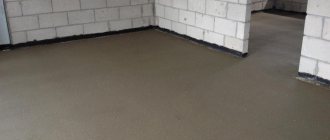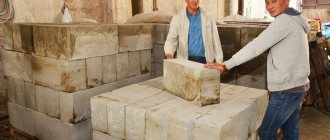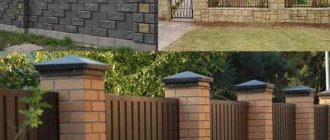For small work, sometimes there is a lack of some “magic” mixture that would allow you to seal a crack or crevice and at the same time be absolutely safe. A variation of this mixture is “house cement”.
Cement is one of the oldest materials known to mankind. The general name unites artificial inorganic materials that, when interacting with water, form a viscous mass . Over time, it hardens and turns into a solid composition. Therefore, cement is used for the manufacture of monolithic structures and fastening other building materials. However, “cement” can reasonably be called any mixture that serves to strengthen or glue various objects. We will look at ways to obtain various options for “homemade cement” that will be useful for household needs.
Quick cement
Ingredients for making cement can be purchased at a hardware store.
Sometimes, in order to cover a small hole, there is no point in buying a huge bag of cement. You can dilute several compounds necessary for sealing small cracks and cracks right at home. Here are the most tested recipes:
- waterproof putty for quickly eliminating leaks. Mix 10 parts of caustic lime powder with 2 parts of water and 12 parts of dry curd whey;
- cement for sealing cracks and cracks in indoor floors . Add coal ash and water to the water-lime until you get a thick, mushy mixture;
- putty for iron . Necessary in cases where cracks, holes or holes have appeared in boilers or containers. Take 30 parts of graphite, crushed almost to a powder. Then add 15 parts of caustic lime and 40 parts of barite white (blancfix). Mix all this with varnish and linseed oil until you get a thick mixture;
- oven putty . Take sand, bone charcoal, graphite and water lime in equal proportions and mix with fresh cottage cheese or ox blood. The composition should be applied immediately after preparation.
Environmental friendliness of the material
A lot has been written about the environmental component of polymer concrete, but concerns are still present. The reason for mistrust lies in the components of the material (styrene and hardener) and in the manufacturing process.
Styrene is a binder in polymer concrete. It is contained in resins, and as soon as we open a sealed container with the substance, we instantly feel the fumes of the poisonous gas.
Methyl ethyl ketone peroxide is usually used as a hardener; it is also dangerous for the human body and requires additional protective equipment for hands and face.
Despite the presence of dangerous components in the composition of polymer concrete, with careful adherence to personal safety rules, application technology and a well-thought-out ventilation system, you can achieve results and complete weathering of toxic fumes.
Cement for glass works
You can repair broken glass using different compounds.
You can glue or seal cracks during glazing work or other similar activities using homemade mixtures.
For gluing glass objects:
- For 1 part of powdered caustic lime, take 2.5 parts of fresh egg white and mix thoroughly. Then add 1 part water and 5.5 parts gypsum and immediately apply to the glass pieces. The composition is used immediately, it cannot be stored;
- Add 10 parts of gelatin to a saucepan and place on low heat. As soon as the composition heats up, add 15 parts of vinegar essence to it. After this, add 5 parts of ammonium dichromate in powder form. Use the resulting mono composition immediately or store in a dark container in a room out of direct sunlight;
- Boil 80 parts of white pitch (pitch, the solid part of the resin of coniferous trees) until all the water has evaporated. After this, remove the container with the broth from the stove and add 12 parts of lard. Also gradually add red ocher powder until the mass reaches a solid consistency. Immediately before use, heat the cement until it becomes soft and apply to the surface to be bonded. The cement will harden quickly and will hold the glass perfectly.
For gluing glass:
- over low heat, dissolve 125 g of powdered rosin, 35 g of white wax and 75 g of red lead (Parisian or English red paint, kolkotara). When everything melts to a liquid state, remove the composition and turn off the fire. Making sure there are no sources of fire nearby, add 18g of purified turpentine (turpentine) and stir with a wooden stick until the mixture cools. After this, the cement can be applied;
- For 10 parts of melted ordinary resin, take 1 part of yellow wax and, using the resulting mixture, stick the glass onto the metal.
Clay rocks
They absorb water, increasing in volume. Give cement the necessary elasticity. All of them contain oxides of iron (Fe2O3), aluminum (Al2O3) and silicon (SiO2). These include:
- Clay.
- Loam. There are more dust particles and some sand.
- Loess. Not a particularly elastic fine-grained rock. Contains quartz or silicate.
- Shale. The strongest of the residual rocks, has a constant composition. Under mechanical stress, it delaminates into plates. Not hygroscopic.
Carbonate and clay rocks combine at high temperatures to form calcium silicates. If you add water to them, hydration begins - the transformation of the liquid mixture into insoluble hydrosilicates, hard as stone. This is why cement has been indispensable in construction for many centuries.
What kind of cement do you need?











